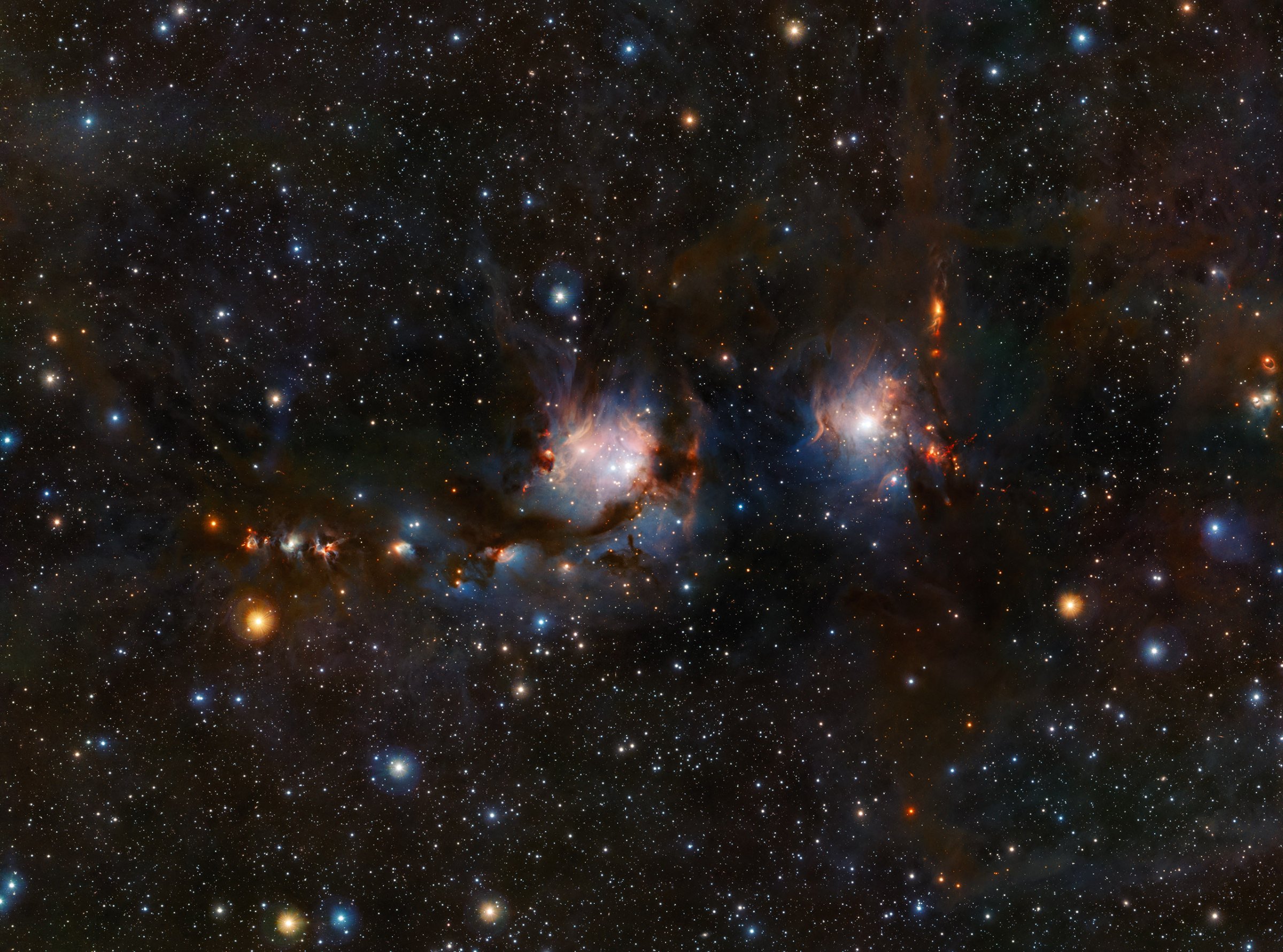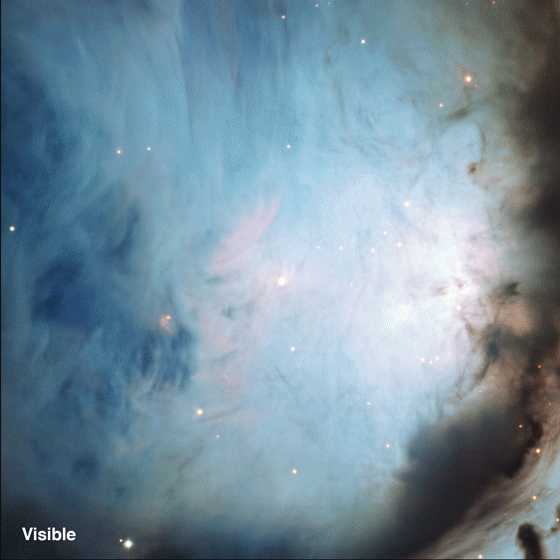
A new image of Messier 78, a nebula located about 1,600 light-years away in the constellation of Orion, reveals stars and other features that in previous observations, had been hidden by cosmic dust.
Messier 78 is what’s known as a reflection nebula. In visible light, images of the formation, like those taken by the ESO’s Wide Field Imager, look like a swirling, luminous, blue cloud, streaked with dark ribbons. Light from the stars at its center reflect off the dust and scatter the light. The new image from ESO’s Visible and Infrared Survey Telescope for Astronomy (VISTA), sees near-infrared light, which passes through the dust, allowing the stars within to shine through. (See comparison images below.) “The telescope”, writes ESO, “is like a giant dustbuster that lets astronomers probe deep into the heart of the stellar environment.”


VISTA is able to see the two blue supergiant stars at the center of the nebula as well as many fledgling stars surrounding them, glowing red and yellow. While bright, they will not become true stars for “several tens of millions of years”, says ESO, once they become “hot enough for nuclear fusion reactions to have commenced in their cores.”
More Must-Reads from TIME
- Donald Trump Is TIME's 2024 Person of the Year
- Why We Chose Trump as Person of the Year
- Is Intermittent Fasting Good or Bad for You?
- The 100 Must-Read Books of 2024
- The 20 Best Christmas TV Episodes
- Column: If Optimism Feels Ridiculous Now, Try Hope
- The Future of Climate Action Is Trade Policy
- Merle Bombardieri Is Helping People Make the Baby Decision
Contact us at letters@time.com